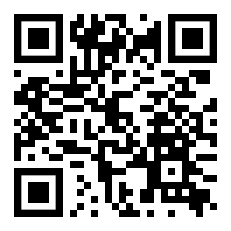The RBA and RBNZ are preparing to cut rates this week. Hong Kong’s Hang Seng hit a 4-month high
The Dow Jones Index (US30) was down 0.37% on Friday (for the week +0.34%). The S&P 500 Index (US500) decreased by 0.01% (for the week +1.13%). The Nasdaq Technology Index (US100) gained 0.38% (for the week +2.05%). Retail sales fell by 0.9% in January, the biggest drop in a year, missing expectations and raising concerns about consumer spending. Despite this, markets remained resilient after a volatile week of policy changes, including President Trump’s new tariff plans and peace talks on Ukraine. Investors welcomed the delay in retaliatory tariffs, helping stocks post strong weekly gains. Technology stocks led the gains, while consumer staples and healthcare stocks lagged. Meanwhile, President Trump signed an executive order directing the US Trade Representative and Commerce Secretary to propose new tariffs for specific countries. Investors await further details and remain hopeful that the talks could prevent the imposition of duties.
Equity markets in Europe were mostly up on Friday. Germany’s DAX (DE40) fell by 0.44% (for the week +3.13%), France’s CAC 40 (FR40) closed up 0.18% (for the week +2.52%), Spain’s IBEX 35 (ES35) gained 0.15% (for the week +2.17%), and the UK’s FTSE 100 (UK100) closed negative 0.37% (for the week +0.37%).
WTI crude oil prices traded near $70.7 per barrel on Monday after three consecutive sessions of losses as expectations of increased supply from Iraq and Russia weighed on the outlook. The president of Iraq’s semi-autonomous Kurdistan region said oil exports, suspended for nearly two years, could resume next month. There were also reports that peace talks over the Russia-Ukraine conflict could take place in Saudi Arabia this week, although details of the participants remain unclear.
Silver surpassed $33 an ounce on Friday, the highest in three months, and outperformed other bullion as silver electrification and manufacturing demand added support from a global turn to safety. An unexpected rise in the ISM manufacturing PMI for January improved the outlook for US factory demand after more than two years of monthly layoffs. In addition, new data showed that China will commission 357 gigawatts of solar and wind power in 2024, a major use of industrial silver.
Asian markets were mostly rising last week. Japan’s Nikkei 225 (JP225) rose by 0.62%, China’s FTSE China A50 (CHA50) gained 2.83%, Hong Kong’s Hang Seng (HK50) jumped by 6.58%, and Australia’s ASX 200 (AU200) was positive 0.19%.
On Friday, the Hang Seng Index rose 806 points or 3.7% to 22,620, its highest in four months and reversing a slight decline in the previous session. The strong gains were broad-based, with the Technology Companies Index rising 5.6% as the popularity of DeepSeek boosted confidence in China’s artificial intelligence sector. The benchmark index jumped almost 7.0% for the week, rising for the fifth straight week, helped by a new pledge from China’s Central Bank to adjust monetary policy to help the economy. The Central Bank also promised to maintain sufficient liquidity and align money supply growth with economic and inflation targets. Meanwhile, Chinese President Xi Jinping will lead a symposium next week on boosting private sector sentiment, which will be attended by key business leaders including Alibaba co-founder Jack Ma. Hong Kong will relax IPO rules for mainland companies.
The Australian dollar climbed above $0.635 on Monday, hitting a two-month high, as investors prepared for the Reserve Bank of Australia’s upcoming monetary policy decision. The RBA is widely expected to cut its monetary rate by 25 basis points from the current 4.35%. However, the Central Bank’s accompanying statement could take a hawkish tone given that trimmed average inflation remains above the 2%-3% target range. Recent data also showed that expectations for Australian Consumer Inflation rose to a ten-month high of 4.6% in February, up from 4% in January.
The Reserve Bank of New Zealand will meet on Wednesday and is expected to cut rates by 50 bps to 3.75%, and signaled that the pace of the cut will be slower to 3% or 3.25% by the end of the year. In terms of economic data, New Zealand’s Services Business Activity Index rose to 50.4 in January from a revised 48.1 in December, indicating a slight expansion in the services sector after ten consecutive months of contraction.
S&P 500 (US500) 6,114.63 −0.44 (−0.01%)
Dow Jones (US30) 44,546.08 −165.35 (−0.37%)
DAX (DE40) 22,513.42 −98.60 (−0.44%)
FTSE 100 (UK100) 8,732.46 −32.26 (−0.37%)
USD Index 106.68 −0.03 (−0.03%)
News feed for: 2025.02.17
- Japan GDP (q/q) at 01:50 (GMT+2);
- Eurozone Trade Balance (m/m) at 12:00 (GMT+2).
This article reflects a personal opinion and should not be interpreted as an investment advice, and/or offer, and/or a persistent request for carrying out financial transactions, and/or a guarantee, and/or a forecast of future events.
